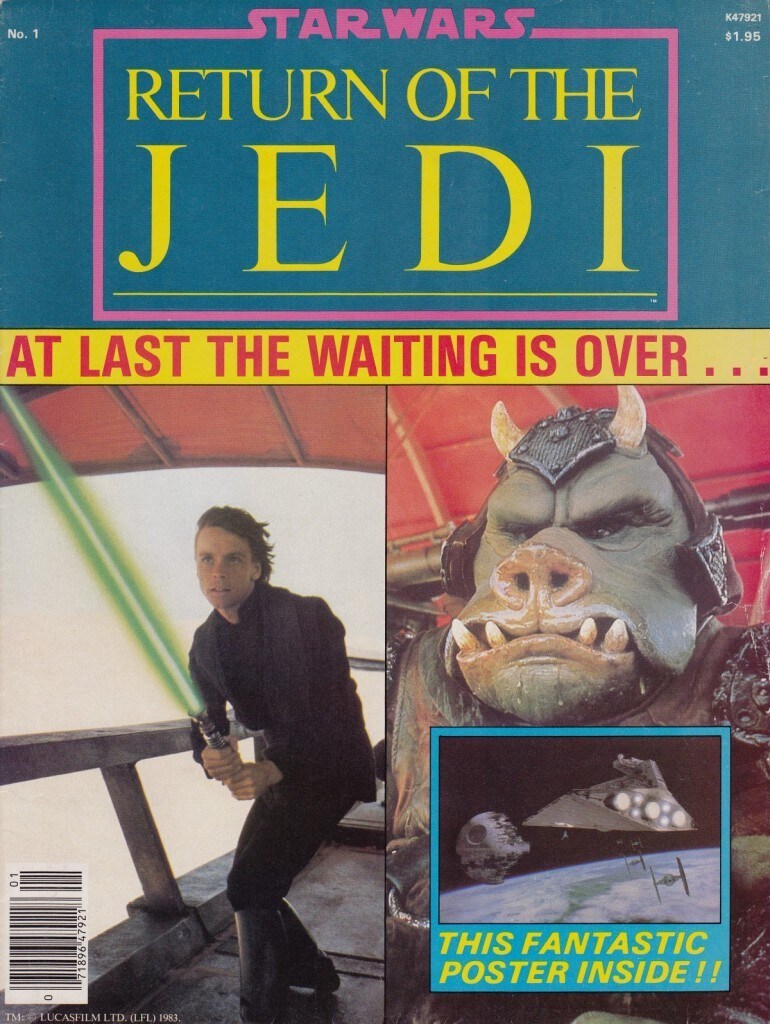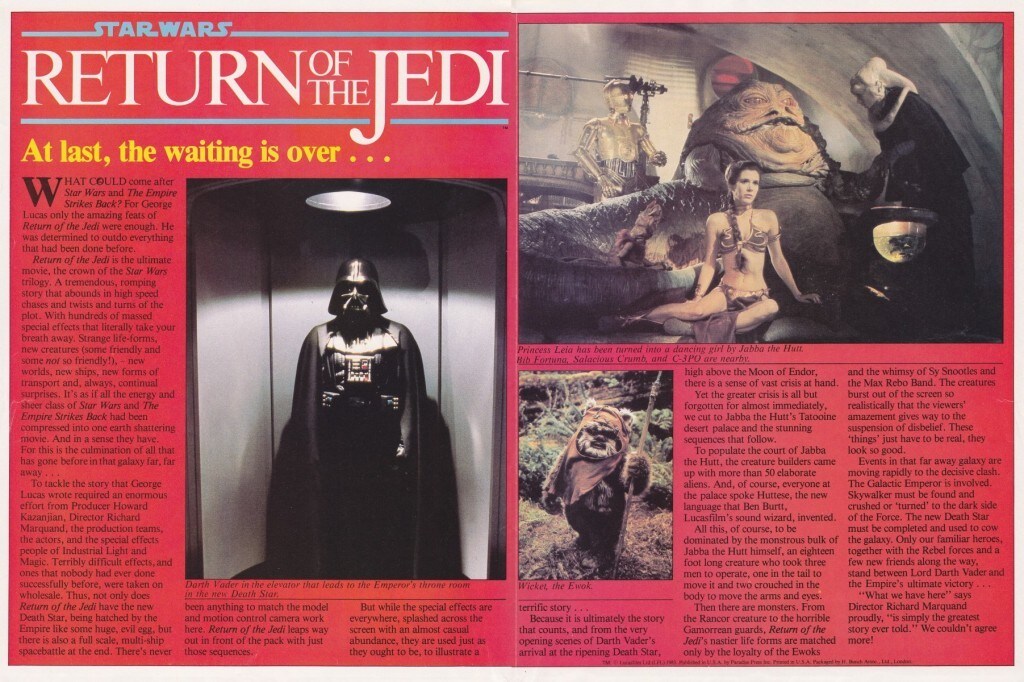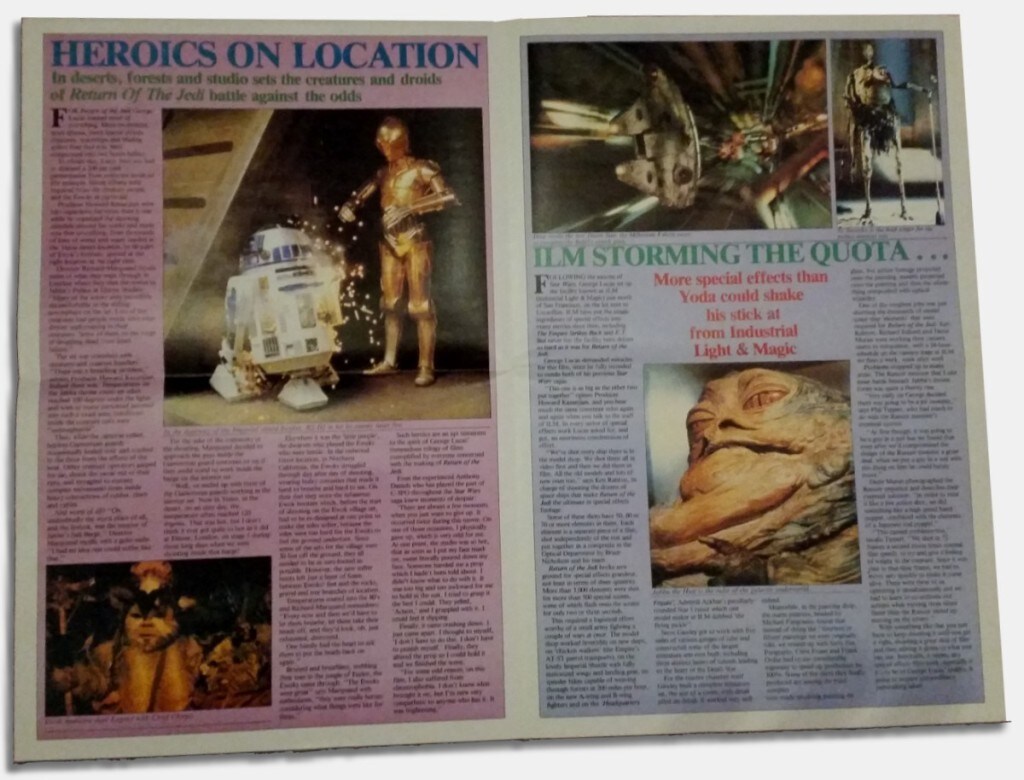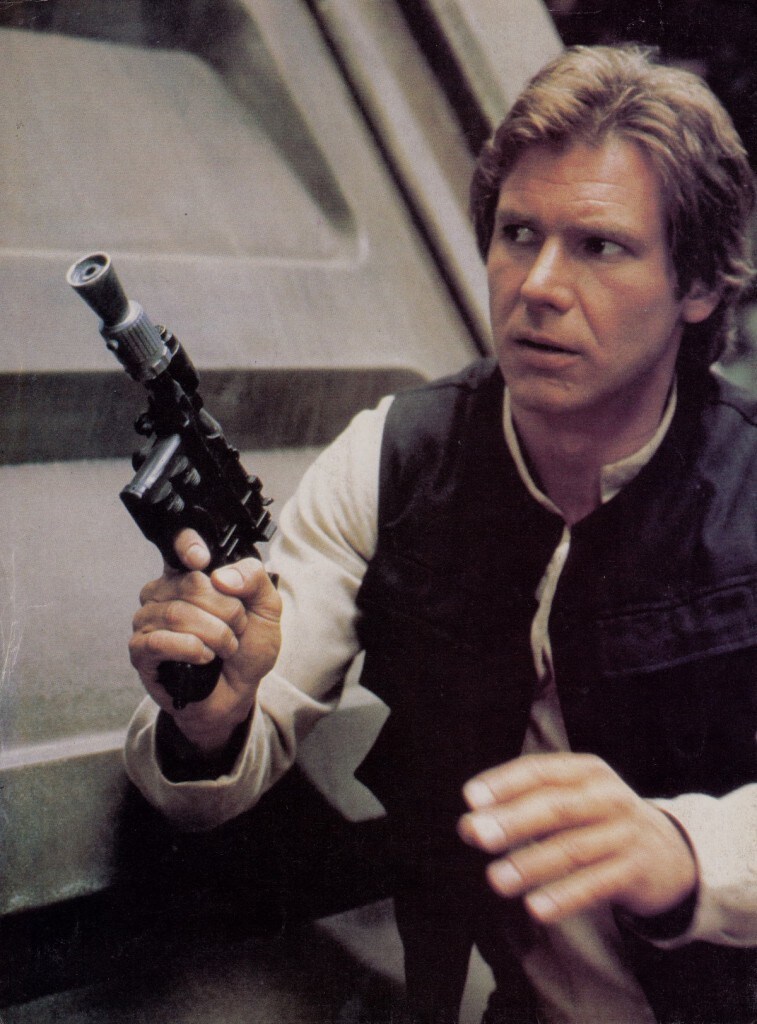Spoiler Alert: Secrets revealed from the final film in the original Star Wars trilogy!
The year was 1983. Fans across the world had grown up as Star Wars kids, chewing through whatever content they could find including comics reprinted in a variety of languages and formats across the planet. Star Wars toys were among the most successful ever produced and the anticipation for the final chapter in the trilogy was at a fever pitch. Fans wanted to know everything they could about the final film. Who lives? Who dies? Do Han, Luke, and Leia perish on Tatooine? Is Darth Vader really Luke’s father?
Much like the recent excitement surrounding Force Friday and the slow reveal of teasers and images from Star Wars: The Force Awakens, Return of the Jedi had a similarly cautious rollout despite being a decade away from the instant gratifications of the Internet. Fans relied almost exclusively on the rumors found at the conventions or in the entertainment sections of newspapers, so it was a welcome relief when the first of four Return of the Jedi poster magazines hit the shelves, shedding light onto the mega production for fans that didn't subscribe to the official magazine, Bantha Tracks.
First off, the cover. Below the square Jedi logo we see Luke holding an airbrushed green lightsaber and standing on the deck of Jabba's sail barge (remember, we had practically no idea what that was at the time). In the next image we see one of his adversaries, a drooling Gammorrean Guard. A small box at the bottom right corner gave us a glimpse of the huge poster inside -- Darth Vader’s Star Destroyer arriving at the second Death Star above the Moon of Endor.
Opening the magazine, we are greeted by three more images. First, the fearsome Darth Vader in an elevator scene cut from the movie. Then on the other page, a captive Princess Leia and C-3PO wait as Bib Fortuna addresses Jabba the Hutt while Salacious Crumb watches. This was one of the very first images of Jabba released to the public, and as such is one of the most commonly seen. Finally, we see Wicket the Ewok in another popular image of the time.
The copy is classic press office hyperbole, although it contains a lot of truth. At the time, Return of the Jedi was very much regarded as the peak of movie production: bigger sets, more special effects, and a story vast enough to contain both. Anything less than a visual feast and a satisfactory resolution would be deemed a failure, and George Lucas, producer Howard Kazanjian, and director Richard Marquand worked hard to bring all those elements to the screen.
The creatures of the film were clearly the focus of the publicity, from Jabba and his court of aliens to the soon-to-be-superstars Ewoks. Return of the Jedi’s nastier lifeforms are matched only by the loyalty of the Ewoks and the whimsy of Sy Snootles and the Max Rebo Band. The creatures burst out of the screen so realistically that the viewers’ amazement gives way to the suspension of disbelief. These things just have to be real, they look so good.
The late director Richard Marquand said it best when he stated, “What we have here is simply the greatest story ever told.”
Turning the poster magazine we are greeted by two more articles. "Heroics On Location" looks at the challenges of filming in environments that include Elstree studios in the UK for the sail barge sequences and Redwood Forest in Crescent City, California, for the scenes on Endor. Images of Artoo and Threepio in the Endor Bunker and Logray and Chief Chirpa accompany the piece, while much of the conversation is held with Marquand as he describes the different shooting locations. Of the Jabba’s court sequences, he says, “Many of the actors were incredibly uncomfortable in the stifling atmosphere on the set. Lots of the creatures had people inside who were almost asphyxiating in their costumes. Some of them on the verge of dropping dead from heat failure.” And the worst set to work on was at Elstree? “Undoubtedly the worst place of all, and the hottest, was the interior of Jabba’s sail barge. I had no idea one could suffer like that.” Fortunately the redwoods were a far less oppressive location, although the heat was still a major factor for the Ewok performers with temperatures soaring into the '80s. “Every now and then we’d have to let them breathe, let them take their heads off, and they’d look, oh, just exhausted, destroyed.”
Still fancy being an extra in a Star Wars film? Even the usually calm Anthony Daniels had a few tense moments on the set. “At one point the studio was so hot that as soon as I put my face mask on, sweat literally poured down my face. Someone handed me a prop, which I hadn’t been told about. I didn’t know what to do with it. It was too big and too awkward for me to hold in the suit. I tried to grasp it the best I could. They yelled ‘action,’ and I grappled with it. I could feel it slipping. Finally, it came crashing down. I just came apart. I thought to myself ‘I don’t have to do this. I don’t have to punish myself.’ Finally they altered the prop so I could hold it and we finished the scene.”
Turn the page and you'll find an article called "ILM Storming The Quota…" which takes a look at the movie's then groundbreaking special effects. Another image of Jabba is featured, as well as Sy Snootles and a classic image of the Millennium Falcon and two X-wings screaming down the tunnels of the second Death Star.
Undoubtedly, the task at hand was bigger and more intense than anything that had ever been attempted. According to effects legend Ken Ralston, “We’ve shot every ship there is in the model shop. We shot them all in video first and then did them in film. All the old models and lots of new ones too.” ILM worked overtime to complete the shots, which comprised up to 70 optical elements. Across the movie, 3,000 elements were shot for more than 500 special effects scenes -- the largest in history at the time. Matte painting crews, special effects, and model makers all combined to make the dream a reality, be it the rancor that Phil Tippet and Dennis Muren brought to life or the ship hangars and palaces that Mike Pangrazio and his team illustrated.
Several of the film's creations were given memorable nicknames. Fans of the era will fondly remember Scout Walkers (these days referred to as AT-STs) being called "Chicken Walkers," and the magazine describes them as the Empire’s AT-ST patrol transports. Admiral Ackbar’s star cruiser is also referred to as a flying pickle by the ILM crew.
Wrapping up the issue on the back page is a publicity shot of Harrison Ford near the Endor bunker, his DL-44 at the ready. Published by Paradise Press in the USA and retailing for $1.95, the magazine also enjoyed a UK release where it cost 75p. Along with the absolutely essential "Collector’s Edition" and the "Heroes and Villains, Creatures and Droids" poster magazines, this was a key purchase for any fan who wanted all the info on the biggest film of 1983.
Mark has contributed to Star Wars Insider for almost a decade, is the owner of Jedi News, writes for the UK’s largest free newspaper The Metro and DeAgostini's Build The Millennium Falcon magazine, and co-hosts RADIO 1138. He's an honorary member of the UK Garrison, a friend of the Rebel Legion, and when he’s not talking, tweeting, or writing about Star Wars he can usually be found sleeping, where he’ll most likely be dreaming about Star Wars.





